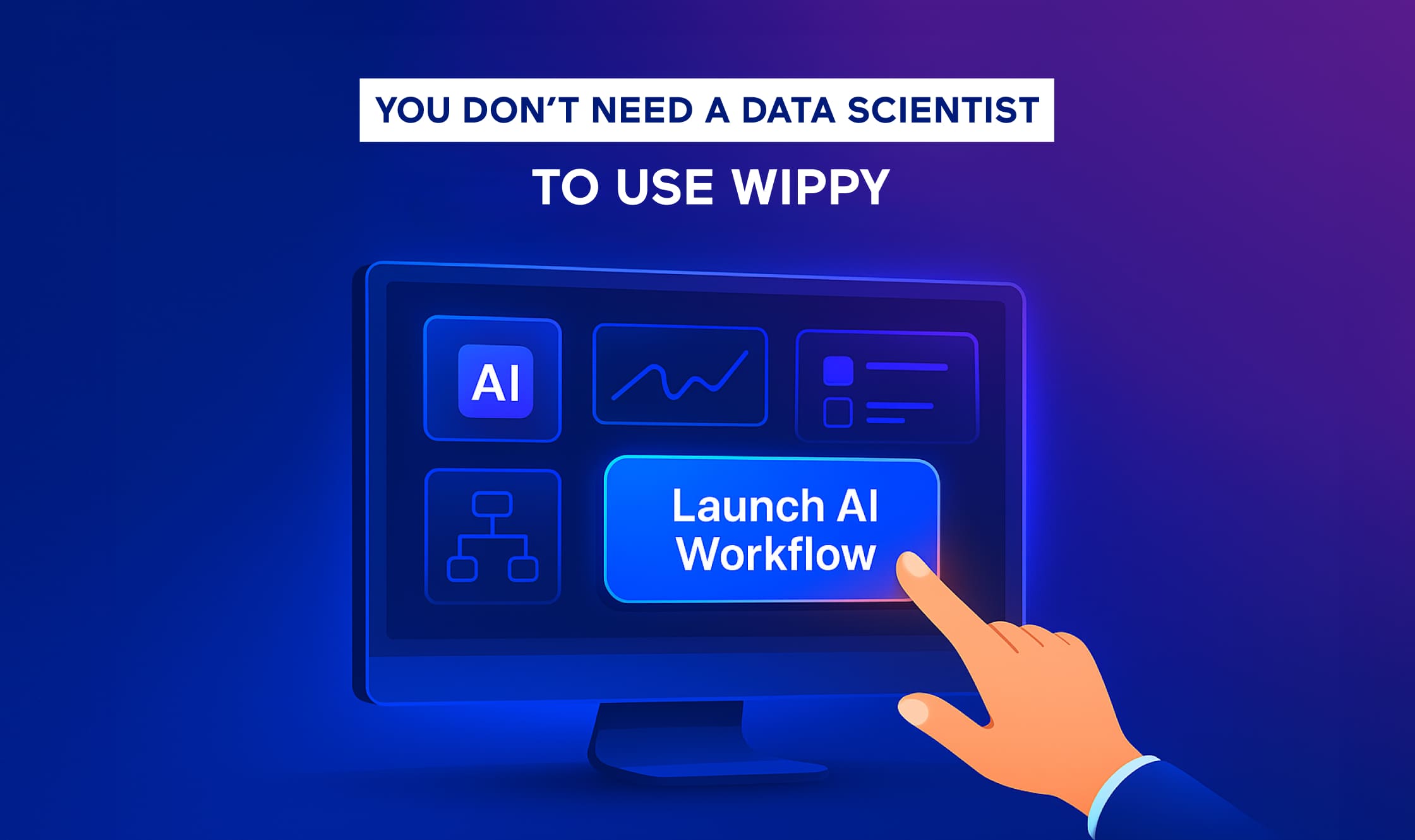AI is revolutionizing RFQ automation in manufacturing by enhancing speed, accuracy, and operational intelligence. Leveraging AI quoting automation for manufacturers together with smart workflow mapping for RFQ AI agents helps teams move from manual spreadsheets and scattered tribal knowledge to structured, data-driven quoting.
For manufacturers responding to complex RFQs, quoting isn’t just about pricing – it’s about precision, speed, and surfacing cost-improvement ideas before the window to act closes. That’s why a clear AI implementation in manufacturing strategy matters.
When combined with a thoughtful AI implementation framework and a phased AI implementation roadmap, it helps teams unlock repeatable wins while managing the real cost of implementing AI.
The Real Goal: Operational Intelligence using AI quoting tools
When OEMs or large buyers send out RFQs, suppliers scramble to assemble responses. These responses often include:
- A cost breakdown per component and subassembly.
- A bill of materials with materials, weights, and suppliers.
- Tooling assumptions, production volumes, and cycle times.
- Engineering suggestions for reducing cost or complexity over time.
And increasingly, OEMs aren’t just asking for a price—they’re asking for innovation and cost improvements along the way. They want to see proactive cost-saving ideas mapped to the product lifecycle: early-stage design suggestions, mid-program process optimizations, and late-stage change proposals. That means teams aren’t just estimating—they’re strategizing. And that’s exactly where AI has the potential to help around quote response automation.
When does AI product the best results?
One engineering leader we spoke with at a multi-site manufacturer explained the challenge. They had received a massive RFQ from a top-tier brand. Beyond the pricing exercise, they were also asked to submit cost reduction opportunities—something that required scanning years of tribal knowledge, spreadsheets, past responses, rejected ideas, tooling strategies, and plant-floor process tweaks.
The questions: how do we use AI to uncover insights in all this fragmented data, faster? And where do we start?
They had already taken the first step around gathering as many of the documents from previous programs they could find. But most of it lived in Excel sheets with inconsistent formats, old Word docs, CAD files in separate folders, and rough bullet points about process changes that had once saved money. They tried dumping some of that into AI tools. The results? Underwhelming. Not because the models didn’t work. But because the data wasn’t ready for AI.
Step One: Clean Before You Automate
What our AI engineering team shared with them—and what every company thinking about AI needs to hear—is this:
AI doesn’t magically clean your data.
If your data is trapped in legacy spreadsheets, poorly structured Word docs, or isolated CAD exports, throwing AI at it is like asking a robot to find patterns in a junk drawer.
You need to start by answering:
- What are the key data fields across your quote responses and cost suggestions?
- How do those fields get reused over time?
- What data do your subject matter experts reference regularly?
- What data is trapped in your different subject matter’s heads that can be extracted?
- Can that be turned into structured records?
This doesn’t mean you need perfect data. But you do need consistent structure—even if it’s imperfect. Think of it as creating a blueprint: which fields matter, how they relate, and where they should live.
Step Two: Map the Workflow, Not Just the Data
Once your data is structured, the next step is to map the workflow for RFQ AI agents. This involves defining the sequence of tasks and decisions that need to occur from the moment an RFQ is received to the final submission. By visualizing this process, you can identify bottlenecks and opportunities for automation.
In the case of the customer, cost-saving ideas didn’t just live in files. They lived in people’s heads. An engineer might remember a screw consolidation trick from a past program. Another might know the time-saving impact of switching acoustic welds for fasteners. But these weren’t recorded consistently.
So we asked:
What does a great quote response process actually look like, step by step?
Here’s what we helped outline:
- Receipt of RFQ → Parse initial requirements and documents.
- Breakdown of BOM → Match parts to past examples.
- Search for historical cost inputs → Across plants, suppliers, and processes.
- Surface past cost-saving ideas → Filter by phase of program.
- Capture SME insight → Either live or via lightweight tooling (e.g., recorded voice notes or screen recordings of process steps).
- Document suggestions → In a structured format tied to the RFQ components.
Once the workflow is clear, you can begin identifying “wait points” and “search points”—steps where AI can reduce cycle time, like:
- Finding similar parts from past RFQs.
- Suggesting comparable tooling setups.
- Flagging previously rejected ideas for reuse.
- Writing up cost reduction justifications based on past success language.
But none of this works without breaking down into smaller steps of the larger workflow, process clarity and data mapping.
Step Three: Build the Right Knowledge Base First
Before deploying AI, build a robust knowledge base that captures your organization’s expertise and best practices. This includes documenting processes, guidelines, and lessons learned from past projects. A well-structured knowledge base ensures that AI agents have access to the information they need to make informed decisions.
For this customer, we advised thinking about their quote response process like building their own internal Google that was a knowledge base for RFQs. A place where:
- Engineers could search for “past screw reduction ideas on product consoles” and get a list of past proposals.
- Costing teams could find “last quote for ABS plastic molding” with part-level context.
- AI agents could write up a justification paragraph using prior language that was accepted.
This isn’t rocket science—it’s a structured database with versioning, search, and relationships between records. But it has to be well thought out and built.
The best news? You don’t need to build this structured database all at once.
Step Four: Start Small with Repeatable Wins
Begin with small, manageable projects that demonstrate the value of AI. Focus on achieving quick wins that can be scaled over time. This approach builds confidence and momentum within your team, paving the way for broader AI adoption.
You don’t need to clean your entire dataset to get value. Start by observing your team:
- Where do they spend time looking for past data?
- What’s the most repetitive part of RFQ responses?
- What questions do they ask over and over?
If you can cut 30–60 minutes from each response by indexing previous work, you’re winning. And as you do, you’re building a repository of knowledge and process that grows in value with each use.
For this client, the starting point was simple:
- Structure the RFQ data into reusable components.
- Index the historical cost-saving ideas.
- Record SME workflows for common RFQ types.
- Define what the ideal “response kit” looks like.
From there, AI agents could assist with:
- Suggesting cost reduction strategies based on part data.
- Writing proposal justifications using past wins.
- Flagging where process steps could be eliminated.
Tips for Other Business Teams Trying to Do the Same with AI
- Collaborate Across Departments: Involve stakeholders from different functions to ensure alignment and buy-in.
- Leverage AI Implementation Services: Partner with experts to navigate the complexities of AI deployment and maximize ROI.
- Continuously Monitor and Improve: Regularly assess the performance of AI systems and make adjustments as needed to enhance outcomes.
- Don’t Start with Models—Start with Use Cases: Understand where you’re wasting time and where decisions depend on prior knowledge. That’s where AI helps first.
- Make the SME Your Product Owner: The best insights live in people’s heads. Ask them: “If you could design the perfect tool for this process, what would it do?”
- Stop Using Excel as a Database : Version chaos, search friction, and hidden knowledge—Excel is great for quick calcs, terrible for cross-functional collaboration.
- Use AI to Capture Knowledge, Not Just Automate Work: Let agents take SME feedback, store it, and reuse it later. This is how you scale best practices across teams.
Think Iteratively, Not “Big Bang”: The biggest risk is trying to fix everything at once. Just pick one step of the quote process and make it 30% faster. Then keep going.
Closing Thought: AI is Just a Mirror Without Structure
AI has the potential to transform manufacturing processes, but it requires a solid foundation of structured data and well-defined workflows. By focusing on these elements, businesses can unlock the full potential of AI and drive meaningful improvements.
Need help mapping or building your AI agents?



